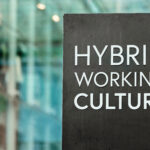The way Ernie Feirer sees it, today’s workforce requires a complete shift in management style. “When I think about managing people in this new paradigm, I can’t really observe people like I used to,” said Feirer, vice president and head of U.S. business for insurance data platform provider Planck.
Executive Summary
As remote work becomes the norm, companies are adopting a new way to manage employees and blend in-house and remote workforces cohesively. With titles ranging from "Manager of Employee Engagement" to "Director of Well-being," even P/C insurers and InsurTechs see the benefits of appointing leaders to a new position focused on the needs and problems of workers who aren't coming together in the same physical location.“I don’t remember the last time where I had a conversation with somebody in the company cafeteria.”
Feirer, whose company employs people in all parts of the U.S. and Israel, said that remote work has changed the conversation, both in what’s being talked about and how employees and managers are communicating. It has also changed how his own company manages employee engagement.
“Our manager of employee engagement keeps all the remote people happy. A company has to support and invest in that.”
For much of the corporate world, remote work is a reality that could well have a long-term impact. According to a 2021 Global Workplace Analytics report, 70 percent of the workforce will work remotely at least five days a month by 2025. It’s a move that’s already underway: Gallup data shows that 45 percent of full-time employees were working partially or fully remote in September 2021. And more than 74 percent of CFOs and finance leaders in an early 2020 Gartner survey said that at least 5 percent of their on-site workforce would be moved to permanent remote positions post-pandemic, illustrating a seismic shift in how organizations are viewing and responding to remote work models.






























